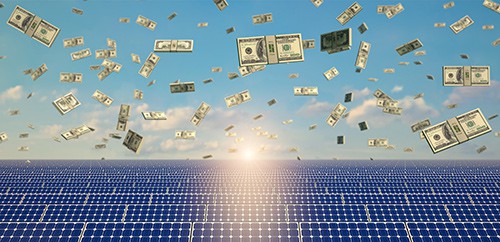Energy pundits are increasingly emphasizing the importance of the role that solar energy, and other clean energy sources, have to play in powering the country’s economic operations.
Already, the Trump Administration has played a pivotal role in flaring up the conversation about renewable energy sources versus non-renewable ones. The president insists that the energy sector should take advantage of its huge coal deposits on the ground. His emphasis, however, may be dumbfounded because solar energy is fast rising in popularity and dominance.

As this environmentally-friendly and robustly affordable energy resource becomes more available to Americans, thanks to the growth of solar technology, numerous investors are providing various empowering financing options for solar assets. Therefore, whether you are already using solar panels to capture energy or not, you should take time to understand reading the slightly confusing solar energy bills.
You should understand that solar energy bills literally put smiles on Americans’ faces (money savings), just as much as they go a long way to save the environment. They feature various different utility charges because solar connections may be done under different types of agreements. Out of the different modalities of paying for solar energy, tracking how much energy your solar system produces is the most important. Unless your solar energy system is reliable enough to produce and store sufficient energy for your all-around use, you will still remain connected to the conventional energy grid. That is why determining the amount of electrical power your system produces is great in determining your regular utility bills.
Let’s get started!

The Solar Bill
There are several ways through which you can purchase and install your solar system. Some people pay upfront with ready cash or other methods of pre-paying for a full purchase. These people completely own the energy produced by their solar systems and never have to pay for any of it. Furthermore, they are often entitled to monthly energy production reports from their solar energy system providers. The monthly energy production statements are very essential for tracking savings made from regular utility bills thanks to the alternative and renewable energy harnessing.
Some people prefer maintaining their operating capitals at a high fluidity and detest harming their cash flows by making big-time cash purchases. They often opt for procuring solar energy systems through leases that are commonly referred to as Power Purchase Agreements. These agreements allow solar energy enthusiasts to start saving immediately and pay the affordable bills later every month until the lien on their solar assets clears. Their solar energy system providers send them the bills. Some other Power Purchase Agreements involve third parties that issue out loans to willing and enthusiastic solar users. The parties financing users are often the ones that send out the monthly bills. However, every financing option is unique to the rest, and their major identifying differences are as follows.

Solar Leases
Companies that provide and install solar energy systems are the ones who exploit this method the most. They understand the production and installation costs. Every solar energy system is designed for a fixed amount of energy capture in its entire lifespan. The total amount of targeted power production is valued at way much lower prices than the regular power supply. For example, a client who should pay 179 dollars every month for regular power consumption is likely to spend only 22 dollars if he spends an equal amount of electrical power in solar energy. These deals are often billed every month. The providers determine the fixed billing by dividing the targeted power production into months.

Power Purchase Agreements
Your solar company will charge you for every Kilo-watt hour that you enjoy from their solar energy system. Technically, the system isn’t yours but theirs. You only pay for their services; the bills are always significantly cheaper for regular energy spending compared to what the national or state power grid charges. In fact, the higher your solar energy charges shoot, the more you save. You should find that during hot summers, the solar energy system installed at your home will cost you more because of increased solar generation. That should not worry you, however, because it will mean more savings for you. Even if you won’t use all of that energy, the extra will go into the power grid. Still, your solar savings will be carried forward in your next utility bills as the extra power will be debited into your future bills.

Solar Loans
Investors who want to make solar energy more accessible by reducing the capital required for solar energy system installations offer these loans. They generally enjoy the benefits of large scale dealings and factor in some fair interest rates from their loans. Your solar panel billing, in this financing option, is always fixed into static monthly payments. The fixed monthly payments are based on the total loan amount just like auto loans. After you finish paying the loan, via bills invoiced to you by your lender, the solar energy savings that you will enjoy from your regular utility bills will always be worth the price.

Regular Utility Bills vs Solar Billing
Energy companies that service the robust energy grids of the country must always access extensive data on your utilities. In fact, if you install solar panels to capture energy, your utility company should gain access to data detailing how much of that solar generation goes into the power grid thanks to excess production. That way, they can plan to reimburse you for the extra energy production via crediting or dollar conversion. They are obligated to foster solar energy savings and savings from any other clean energy sources. Solar panel billing, on the side, does not require gaining access to data from your regular utility spending. Solar billing relies exclusively on the solar panel energy production of your system to charge you. The bills seldom include any third party charges that include:
- Standing charges
- Service charges
- Taxes
Conclusion
It is a common fact that most folks absolutely detest bills, and some may be bothered by the fact that solar energy systems only increase the number of bills going to their mail addresses every month. However, that attitude is easy to fix once they understand that despite the increased number of utility bills mailed to them, solar savings ultimately cut their utility spending. They only have to understand how to read the bills to determine just how much money their panels save them monthly.
